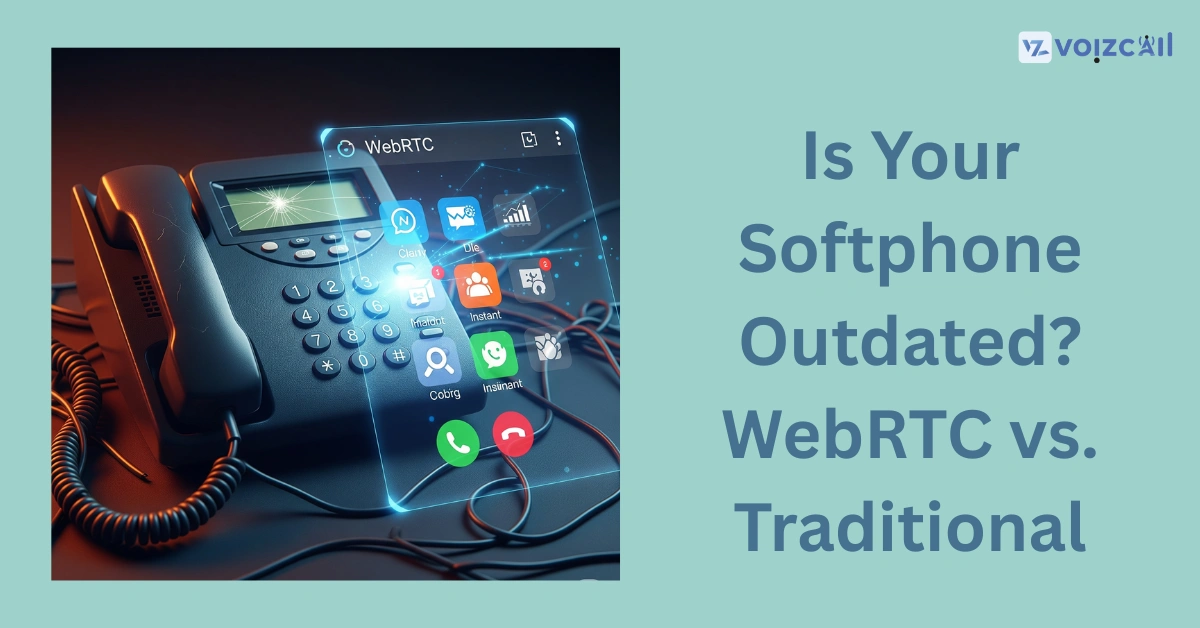


05/Jun/2025
Have you ever stopped to think—is your softphone outdated? In today’s fast-moving world, how we make calls is changing rapidly. The traditional softphones you’ve used for years are now facing serious competition from newer, smarter options powered by WebRTC technology.
We’ll break down the key differences in the WebRTC softphone vs SIP softphone debate, highlight what makes the best WebRTC softphone 2025 stand out, and explore the future of VoIP: WebRTC vs SIP. If you want clearer calls and easier setups, keep reading!
What Is a Softphone Anyway?
Basically, a softphone is computer software that lets you talk over the internet from your phone or laptop. Instead of a physical phone, your device becomes your phone.
Generally, softphones are connected through the use of SIP which is the Session Initiation Protocol. Nowadays, WebRTC has made it possible to call directly from the web by eliminating the need for separate apps.
What Makes WebRTC Softphone Different from a SIP Softphone?
Call / Email for Sales Inquiry Today
Here’s the summary of the topic:
SIP Softphone: Reliable and widely used, but requires installing software and sometimes tricky configurations. It depends on SIP servers to connect calls.
WebRTC Softphone: Works right from your browser or app without installation. It offers faster connections, better audio/video quality, and stronger security by default.
The WebRTC softphone vs SIP softphone battle comes down to convenience and modern features—and WebRTC is winning!
Why Choose the Best WebRTC Softphone 2025?
Businesses are switching to WebRTC softphones because they:
Are simple to use with no complicated setup
Work on any device, anywhere
Provide high-quality audio and video
Include built-in security with encryption
Easily integrate with other business tools
The best WebRTC softphone 2025 options offer all this and more, making communication smooth and hassle-free.
The Future of VoIP: WebRTC vs SIP
Looking ahead, the future of VoIP is clear:
WebRTC is gaining popularity for its ease of use, flexibility, and secure, real-time calls.
SIP will still be important for large-scale telecom but is gradually making room for WebRTC innovations.
By using WebRTC, many businesses are getting quicker deployment, a better user experience and cutting costs.
In a nutshell, modern businesses should go with WebRTC over SIP when it comes to VoIP.
Are You Let Down by Your Softphone?
When your softphone seems to be lagging, has a confusing interface or lacks useful features, you should look into a new option. Moving to a WebRTC softphone may make your calls clearer, help you communicate faster and take less effort from the IT team.
Final Thoughts: Upgrade to Stay Ahead
In 2025, staying with an old softphone can mean missed opportunities. The WebRTC softphone vs SIP softphone discussion shows that WebRTC is the way forward.
Are you ready to experience the benefits of the best WebRTC softphone 2025? Upgrade today and enjoy clearer calls, easier use, and stronger security!